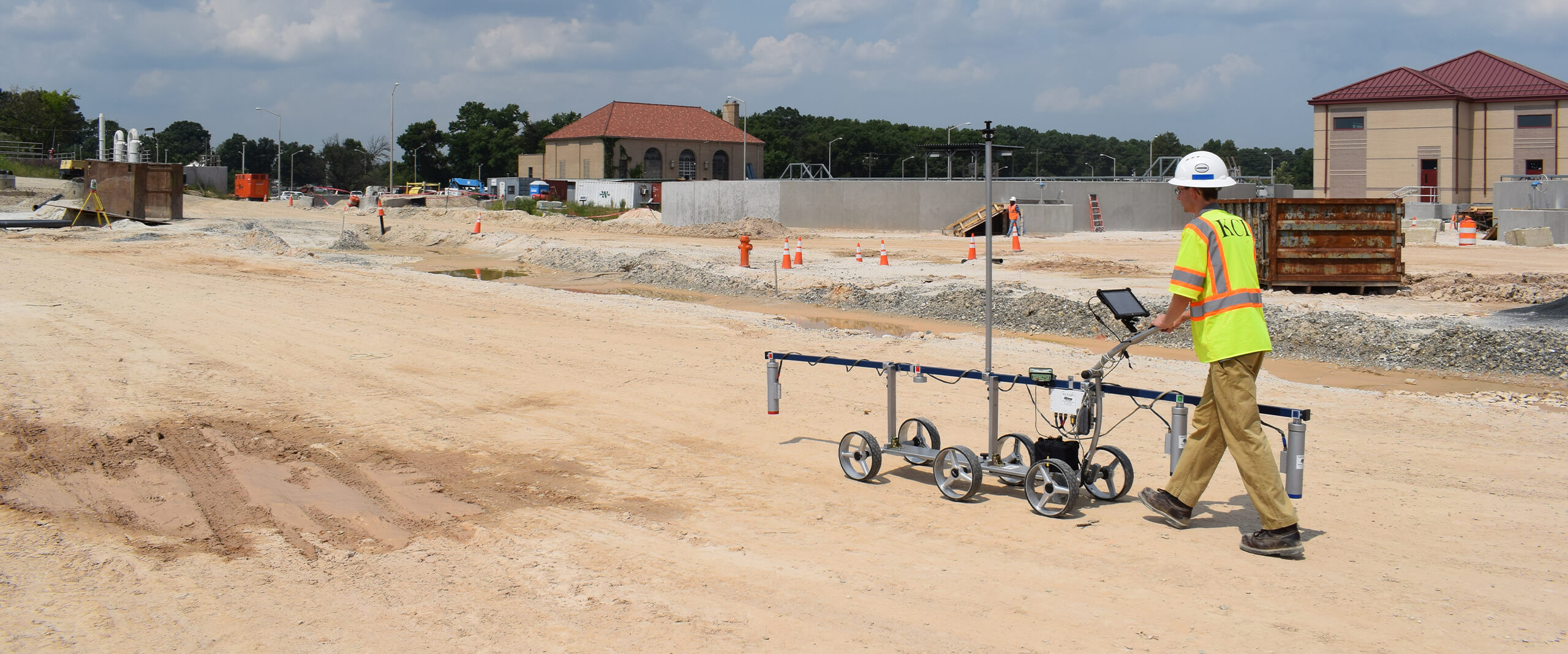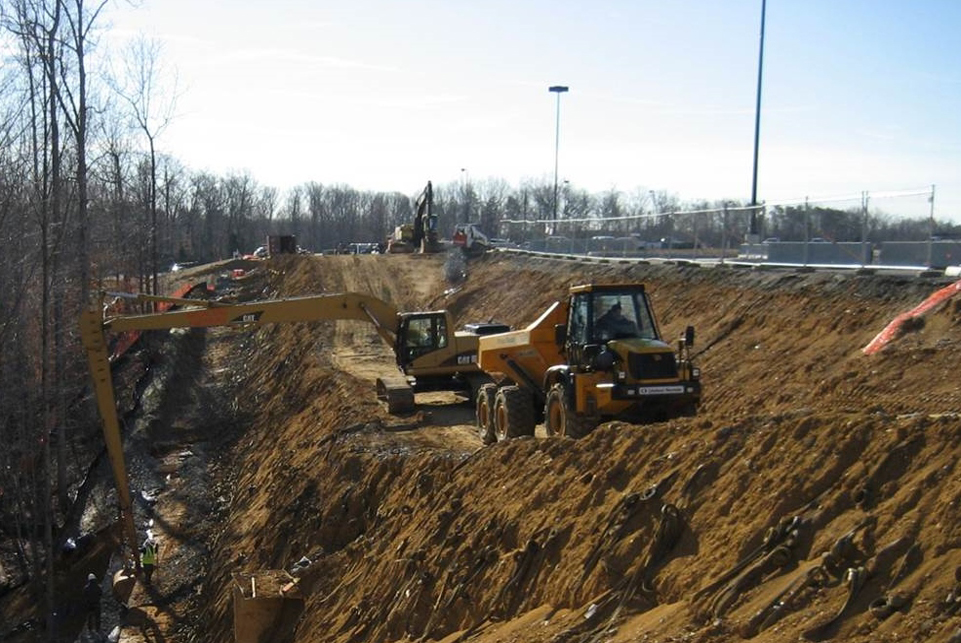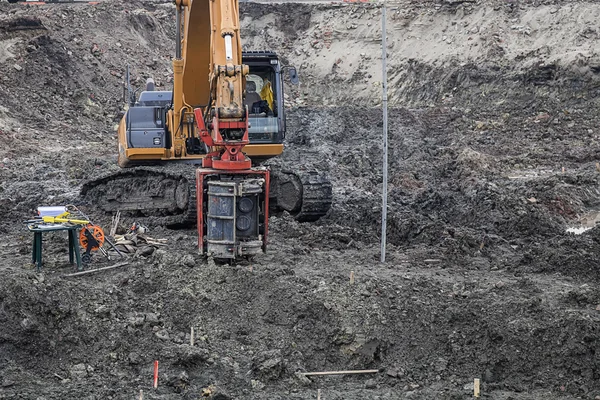How Geo Tech Engineering Sustains Large-Scale Construction Projects
Wiki Article
The Crucial Contributions of Geotechnical Designers in Assessing Soil Actions and Foundation Design for Lasting Facilities Development
Geotechnical designers function as a foundation in the world of sustainable framework advancement, where their proficiency in analyzing soil actions straight influences the safety and longevity of frameworks. By utilizing sophisticated techniques such as Standard Infiltration Tests and Cone Infiltration Testing, they thoroughly review soil residential or commercial properties, resulting in notified decisions on structure layout. These evaluations not only mitigate risks connected with differential negotiation yet likewise pave the way for innovative, environmentally conscious techniques. As we discover the vital role they play, the effects of their payments elevate vital questions regarding the future of facilities strength and sustainability.Function of Geotechnical Engineers

In addition to website investigations, geotechnical designers examine potential dangers such as soil liquefaction, incline stability, and groundwater concerns. They apply sophisticated design principles to establish services that minimize these risks, ensuring that styles comply with appropriate codes and standards. Their work frequently involves cooperation with various other engineering disciplines, architects, and environmental researchers to produce integrated techniques to framework growth.
Furthermore, geotechnical engineers add to lasting practices by promoting making use of materials and techniques that reduce environmental influence. Through their extensive understanding of soil auto mechanics and geology, they play a vital role in fostering risk-free, durable, and sustainable framework that meets the needs of culture while shielding the setting.
Soil Actions Assessment Strategies
Understanding dirt actions is fundamental to notified decision-making in geotechnical engineering, as it straight influences the design and building processes. Numerous assessment techniques are employed to review soil residential properties, making sure exact predictions of its performance under different loading conditions.One key approach is the Typical Infiltration Examination (SPT), which provides insights into dirt thickness and consistency via the resistance come across throughout penetration. Cone Infiltration Screening (CPT) supplies a constant account of dirt stratification and in-situ strength parameters, enabling an extra in-depth understanding of subsurface conditions.
Research laboratory examinations, such as Atterberg limitations, unconfined compressive stamina, and triaxial tests, are important for characterizing dirt actions under controlled conditions. These examinations assist in the decision of crucial parameters, including shear strength, compressibility, and leaks in the structure.

Structure Layout Concepts
Foundation style principles are essential for making sure the security and durability of frameworks, as they determine exactly how tons are transferred from the superstructure to the underlying dirt. These concepts incorporate numerous considerations, including load-bearing ability, negotiation, and lateral stability. A detailed understanding of dirt auto mechanics is vital for geotechnical designers to review the communication between the soil and the foundation.One key principle is the suitable selection of foundation kind, which might consist of superficial foundations, such as spread footings, or deep foundations, like stacks or geotechnical industry caissons, depending on dirt problems and structural lots - geotechnical eng. The structure has to be created to decrease differential settlement, which can bring about architectural damage

Sustainable Facilities Practices
Exactly how can we successfully integrate sustainability into framework techniques? Sustainable infrastructure techniques start with extensive site analyses, which assess dirt habits, local ecosystems, and source availability.Moreover, utilizing innovative building and construction methods, such as using recycled products and low-impact structures, considerably reduces the carbon impact of infrastructure tasks. Geotechnical engineers play a crucial function in picking proper materials that improve resilience and sustainability, such as using geo-synthetics to enhance dirt stability and reduce disintegration.
In enhancement, lasting facilities practices call for continuous surveillance and upkeep to guarantee that frameworks stay resistant in time. This includes applying adaptive monitoring techniques to resolve prospective ecological changes. Cooperation among stakeholders-- including engineers, neighborhood communities, and policymakers-- is crucial for incorporating sustainability goals into job preparation and implementation. Ultimately, these techniques not only add to the longevity of frameworks but likewise advertise a healthier atmosphere, lining up facilities advancement with more comprehensive sustainability purposes.
Case Researches and Applications
Instance researches in geotechnical design supply useful understandings into the useful applications of soil actions and lasting framework techniques. One remarkable instance is the construction of the Burj Khalifa in Dubai, where comprehensive soil testing and evaluation were conducted to evaluate the distinct challenges presented by the region's loose sand and high water table. Geotechnical designers used progressed strategies such as vibrant probing and cone penetration testing to determine the dirt's load-bearing capacity, inevitably resulting in the style of a deep foundation system that supports this famous framework.Another important case is the remediation of the San Francisco-Oakland Bay Bridge after the 1989 Loma Prieta earthquake. Geotechnical evaluations disclosed the need for soil stablizing techniques, consisting of grouting and dirt nailing, to enhance the seismic strength of the structure. These interventions not only improved the bridge's safety but also added to its longevity and sustainability.
Such case researches exhibit how geotechnical designers play a crucial duty in comprehending soil habits and using cutting-edge solutions to make sure the architectural honesty and sustainability of framework tasks. geotech engineer. Their know-how is crucial in addressing the facility tests posed by various soil problems across diverse geographical places
Verdict
To conclude, the payments of geotechnical engineers are important for the assessment of dirt habits and the layout of structures, which are essential for lasting infrastructure growth. Through the application of sophisticated testing strategies and cutting-edge materials, these experts guarantee the security and safety of frameworks while lessening ecological effects. The assimilation of sustainable methods advertises strength in infrastructure projects, highlighting the value of partnership among stakeholders to attain reliable building services that fulfill both ecological and societal demands.Geotechnical engineers serve as a cornerstone in the realm of sustainable infrastructure advancement, where their experience in analyzing soil habits straight affects the safety and long life of frameworks.Geotechnical engineers play a vital role in the style and construction of facilities by analyzing dirt and rock behavior to make sure stability and safety. An extensive understanding of dirt auto mechanics is important for geotechnical designers to review the interaction in between the structure and the soil.
Geotechnical analyses revealed the need for soil stablizing strategies, including grouting and soil nailing, to enhance the seismic durability of the foundation.In conclusion, the contributions of geotechnical engineers are crucial for the analysis of dirt actions and the style of structures, which are necessary for lasting framework advancement.
Report this wiki page